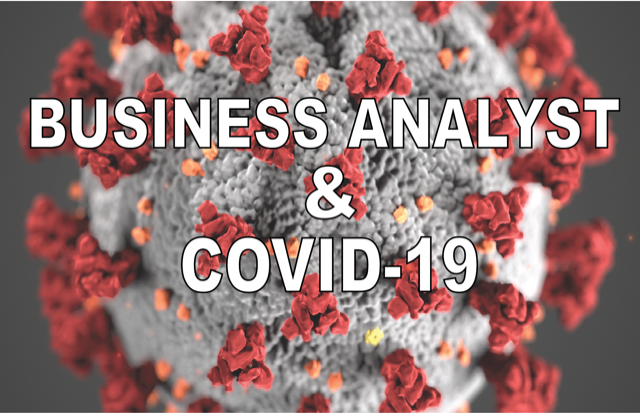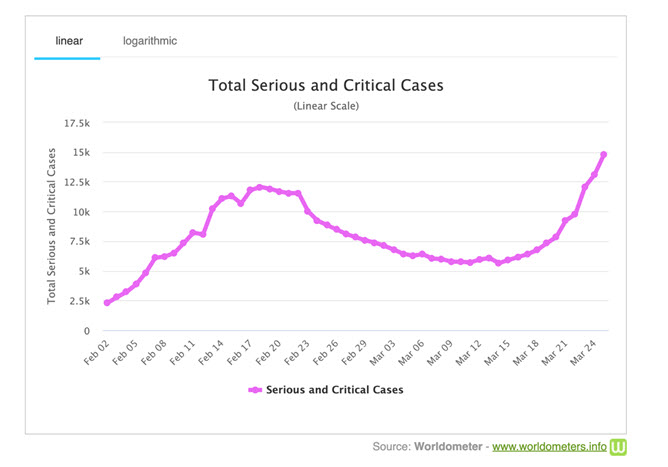The central role business analysis can play in solving problems resulting from the coronavirus (COVID-19) pandemic
At the time I write this article, the United States has reached a grim milestone: more than 1,000 deaths linked to the coronavirus.
As the pandemic continues to upend life around the world, data, big and small, takes a central role in mobilizing the right efforts to prevent a much greater calamity. And as people and organizations face unprecedented hardships, business analysts, data scientists, and data analysts are going to be integral to the solution. We have the skills that the world is counting on to arm our leaders with the best possible information as they are tasked with making immediate choices, allocating resources, and anticipating the next obstacles to overcome.

Here are three actions that analysts can take now to rise up to the challenge:
1) Keep asking the right questions and gathering the right data to answer them.
Imagine that you work for a nonprofit that provides temporary housing via homeless shelters for families experiencing homelessness. After schools were closed to slow the spread of the coronavirus, the students living in those shelters are expected to adopt remote learning.
Questions that become extremely relevant for your organization to create an effective response for the crisis may include:
- How many children do we have in our shelter system? Is this number expected to grow over the next few weeks?
- What percentage of those children are in shelters without internet access for residents?
- What percentage of those children will get devices with built-in internet vs. remain in a waiting list?
- What impact in academic performance students waiting for the right equipment are likely to experience if they fall behind their peers?
By proactively doing research and coming up with good answers and estimates, analysts can increase the chances of their organization not only redirecting its resources to where they are most needed, but also securing more funding. Donors and funders are much more likely to take action if instead of issuing vague requests for help, the organization can frame the problem to be solved in very specific terms: "we have 6,500 students at risk of falling behind their classes due to an estimated two-week wait for devices with built-in internet to enable them to access virtual lessons".
2) Use second-order thinking to validate your organization's responses to the crisis
Things are not always as they appear. Often when we solve one problem, we may end up unintentionally creating others that could be even worse. The best way to validate a solution to a new problem is to examine long-term or less obvious consequences of our decisions through second-order thinking.
Imagine that you work for a company that had an important in-person training event scheduled for prospects that had to be canceled due to the restrictions on social gatherings. The company decides to host a public virtual event using a platform like Zoom.
Second-order thinking may be applied here by asking how the various actors will respond to this change. How will the presenters have to adjust the way they interact with the audience? How might the Q&A portion of the event be affected by the fact that participants will have to use chat instead of raising their hands in the room? Are there risks associated with sharing the event's link publicly?
Turns out that the answer to the last question is yes. A little research would uncover the fact that recent public videoconferencing events have been disrupted by attacks performed by bad actors (sadly including even school meetings that exposed children to hateful images and vulgar screen-shares). The same research would allow a BA to identify simple steps to prevent such terrible outcomes, like changing Zoom's default screen-sharing configurations and turning off public settings.
3) Build useful data visualizations

We all know the adage "a picture is worth a thousand words". The essence of complex or multiple ideas are often better represented by a single image than a verbal description.
For example, suppose that you are working for an organization developing a test for the new strain of coronavirus. A diagram like the one below could be created by a business analyst to help a larger audience understand how accurate the current version of the test is.

Fictitious example of a visualization to communicate the accuracy of a test to identify virus infection
On the left, we see that for every 10 patients who aren't infected, 8 will be correctly identified as virus-free, and two will be incorrectly labeled as infected (the false positives for infection). On the right, for every 10 people with the virus that are tested, 6 will be correctly identified as being infected, and 4 will be incorrectly labeled as virus-free (the false negatives for infection). In this fictitious example, the data could be used to inform a decision to proceed with more research to reduce false negatives, or to create mechanisms for symptomatic patients who tested as virus-free and belong to a risk group to receive additional laboratory confirmation.
# # #
Behavior science tells us that the human brain is programmed to narrow its focus in the face of a threat. To turn the corner on this challenge, leaders will need help opening their mental aperture and avoiding myopic thinking. Analysts willing to ask better questions, use a wider angle to notice things that promote second-order thinking, and design visualizations that make information more consumable for decision-makers will be providing invaluable contributions to their organizations at this time of crisis. Their efforts will be instrumental to anticipate what comes next week, next month, and even next year in order to prepare their organizations for the changes ahead.
Author: Adriana Beal
Since 2004, Adriana Beal has been helping Fortune 100 companies, innovation companies, and startups in the U.S. gain business insight from their data, make better decisions, and build better software that solves the right problem. In 2016 she decided to follow her passion for quantitative analysis and got a certificate in Big Data and Data Analytics from UT. Since then she has been working in data science projects related to healthcare, IoT, and mobility. Currently the Lead Data Scientist at Social Solutions, Adriana has two IT strategy books published in her native country, Brazil, and work internationally published by IEEE and IGI Global. You can find more of her useful advice for business analysts at bealprojects.com.